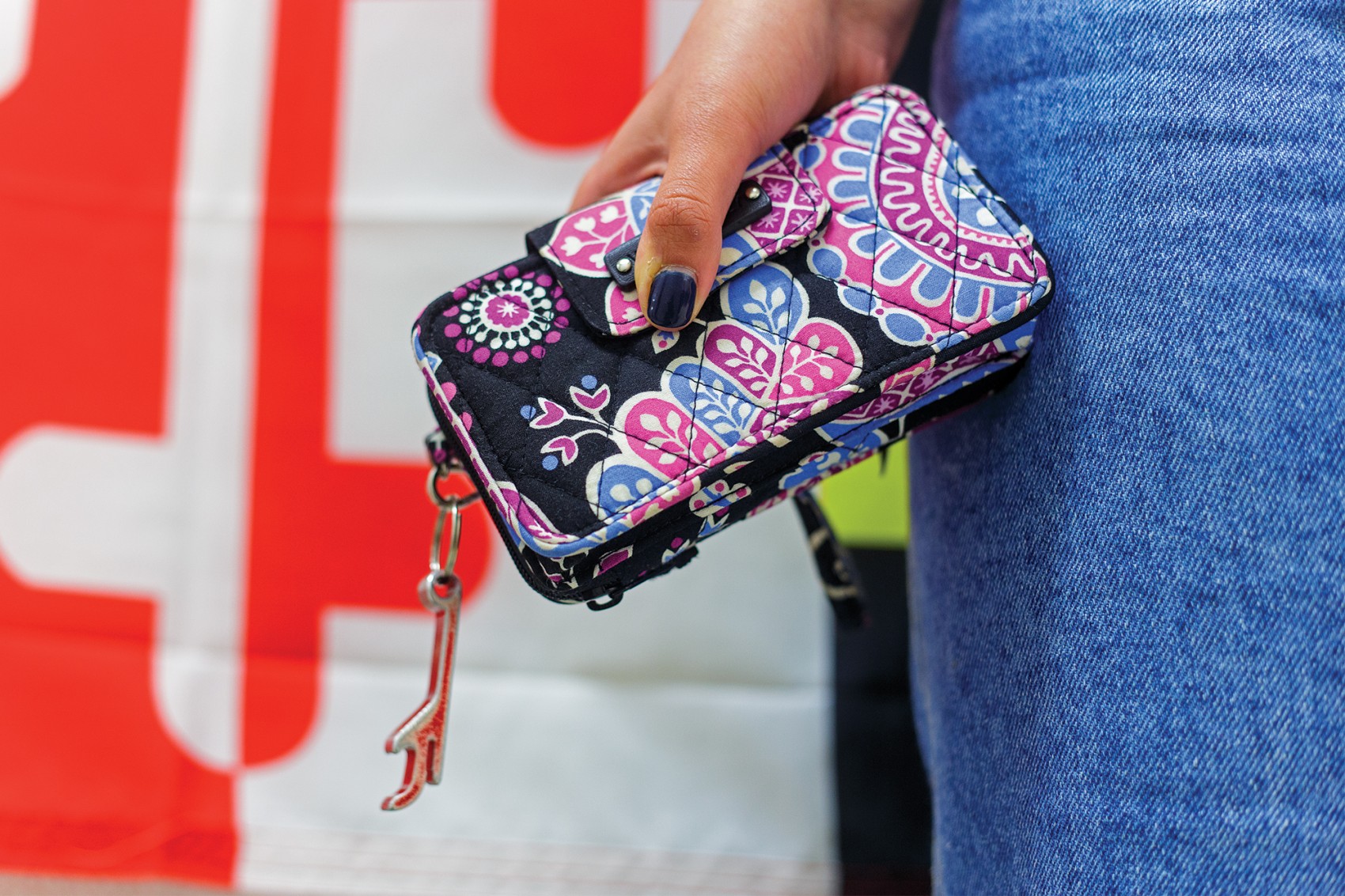Analeigh Hughes stood front of the security line at Maryland Stadium before the University of Maryland vs. Howard University football game Sept. 3. She had snacks, juice, an insulin pump for her Type 1 diabetes and an EpiPen.
The freshman journalism major placed these items in a plastic freezer bag because of the stadium’s new bag policy she read about that morning, after she looked it up online. She then put the Ziploc in a drawstring bag she received at freshman orientation, so she could keep the equipment safe and carry it more easily.
But security personnel told Hughes she couldn’t enter with the drawstring bag, and that she could instead buy a clear bag in which to put all of her items — including the drawstring — for $15 at a table outside the stadium.
Hughes explained her condition and showed officials the medical alert bracelet on her wrist, but it wasn’t enough to let her through with her drawstring. She bought the $15 bag so she could see the game.
This is all for a new policy at Maryland Stadium, which states that anyone who wants to enter with a bag must bring a clear one that’s smaller than 12 inches by 6 inches, a 1-gallon plastic storage bag, or a clutch that isn’t bigger than 4.5 by 6.5 inches.
“Now I know, but it was really kind of frustrating,” Hughes said. “Especially with students that need to bring things in with them.”
Senior Associate Athletic Director Zack Bolno said the clear bag policy was put in place “to ensure that our fans would have a safe and enjoyable experience at our stadium.”
The policy went into effect at the Red-White spring football game in April 2016 and will also apply to men’s and women’s basketball games, he said. In the past, a ban on backpacks was the only restriction on bags, Bolno said.
“Bag policies are fairly common in this area in regard to the professional teams,” Bolno said.
The sports arenas that house the Ravens, Wizards and Capitals have similar policies, Bolno said. M&T Bank Stadium, however, does have medical exceptions, according to its website. This university is now included in the 13 out of 14 Big Ten schools that have implemented bag policies, Bolno said. But in the past, Hughes said she’s had no problem bringing her medical equipment in bags to sports games at Madison Square Garden or MetLife stadium.
To raise awareness for the new policy, Bolno said this university increased signage around the stadium and mailed information about the policy to season ticket holders.
A game week email was also sent on Sept. 1 prior to the first game that included a stand-alone section on the new clear bag policy, Bolno said. He added that Maryland Athletics announced the new policy during the “Welcome to the B1G Show!” athletic season kickoff at Maryland Stadium in late August.
However, Hughes said she didn’t see any advertisements for the new policy.
“I had to go searching for it,” she said.
This university will have lockers located in Lot Q on football game days, which fans can rent for $10 to store their items, Bolno said. Fans are encouraged to arrive early, he added, to better deal with lines. The stadium will open 90 minutes before the home game against Purdue.
The policy doesn’t affect Jillian Madsen, a sophomore environmental science and policy major who went to football games last year.
“If this applies to everybody going to the games, then it could be an issue for parents and older people that are just coming in,” Madsen said. “Like moms [who] have their purses and whatnot.”
People looking for more information on the clear bag policy can visit here.



